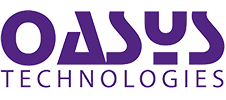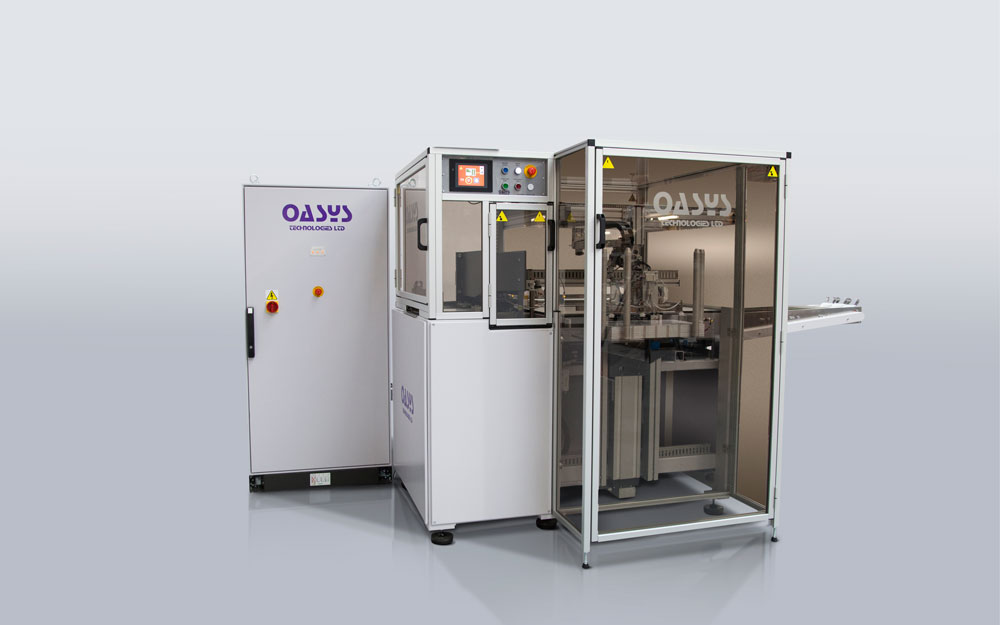Following substantial joint development work, Smart Packaging Solutions (SPS), a major developer of smart card technologies, and Oasys Technologies UK, a leading smart card manufacturing tool vendor, are proud to announce an exciting new industrial solution for smart card production – making production of dual interface cards easier, faster, more accurate and more accessible to smart card manufacturers of all sizes.
ROUSSET, FRANCE, October 24, 2018 – Considering new dual interface cards manufacturing techniques should be made available to all smart card vendors, Smart Packaging Solutions (SPS) and Oasys Technologies UK are entering in a collaboration to offer to the market an always easier access to new technologies. Thanks to this collaboration, smart card manufacturers will benefit from Oasys offer combining the best-in-class production
tools with the most innovative processes and SPS offer allowing to build contactless, hybrid and dual interface cards suitable for all applications (payment, identity, mass-transit, etc). The partnership between SPS and Oasys builds upon a long-standing collaboration has already seen many of these production tools delivered to smart card producers in Europe, Middle-East and Africa.
The Oasys machine range goes from semi-automatic for smaller volumes and budgets up to larger format fully automated solutions allowing smart card industrialists to integrate dual interface manufacturing technology into their process more easily than ever and at a lower processing cost.
Now smart card vendors can benefit from the most advanced manufacturing technologies as Oasys introduces a new series of semi-automated production equipment, specially adapted to handle the SPS 40μm PET inlays, thus guaranteeing a quick setup and an optimal yield. This especially comes on time with the evolution of market demand with the ongoing migration to dual interface cards in the Americas, requiring more cards with colored S-Lams®, in order to satisfy specific marketing demands from card issuers.
Regarding the fully automated solutions, the process in the new machine (equipped with specific detectors) allows an accurate alignment between the different layers using the aluminum structure already in the inlay, thus eliminating the need for print marks – this provides maximum accuracy and for the first time eliminates the additional print processing and cost. A further key factor in the market is the growing use of colored SLams (inlays) which need equally accurately aligning in the card sheet assembly (collation). This process allows S-Lams of almost any color to be handled with similar yield, speed and flexibility.
Jean Baptiste Leos, Banking Product Manager at SPS declares: “With this combined solution with Oasys we bring an integrated solution to smart card manufacturers of all sizes, enabling them to integrate our process while getting the highest yields. Thanks to this joint offer smart card vendors will be innovative and remain competitive in conquering new markets.”
Paul Holloway, Sales Director at Oasys adds: “The combination of the unique SPS technology and a machine that allows easier and more cost-effective manufacture of their solution is a key step in the growth of dual interface technology and we look forward to helping our clients take advantage of this…”
About SPS
Smart Packaging Solutions is specialized in the design, manufacturing and sale of contactless solutions dedicated to ID cards, e-passport and dual interface banking cards. Headquartered in Rousset, France, with a subsidiary in Singapore, SPS employs 140 people. Part of the French IN Groupe, the company specializes in contactless and dual-interface products, with a recognized micro packaging expertise. SPS has filed over 120 patents supporting its exclusive technologies. More information at http://www.s-p-s.com
Contact
Olivier BRUNET, Product & Marketing director, SPS, contact@s-p-s.com
Phone: +33 4 42 53 84 44
SPS is part of the IN Groupe.

IN Groupe is a global leader in secure identity solutions and digital services.
In a mobile and digital world where data security has become the major issue, the IN Groupe offers States, governments and businesses trusted solutions including added value electronic components for banking, identity solutions including electronic components, cutting-edge secure credentials and safe and reliable interoperable systems, but also innovative and efficient digital services, and secure solutions for complex printings and workflows.
Real engineering company, the IN Groupe is specialized in the integration of electronic and biometrics in identity documents and in polycarbonate cards. Thanks to its innovative new products and its strengthened security, the IN Groupe has become a worldwide leader with major customers in over 68 countries.
Based in Paris, the IN Groupe has two production centers and employs more than 900 employees, of which over a third is dedicated to technology development.
Contact: IN Groupe
Romain Galesne-Fontaine, Communication and Public Affairs Director, media@ingroupe.com
Phone : +33 1 40 58 30 00
About Oasys
Oasys is a leading designer and manufacturer of highly innovative plastic card production machines. With a heritage in the industry dating back to the late 70s it continues to provide a range of automated production systems for Banking, Smart, Dual interface and ID cards and EID products in over 60 countries and to many of the world’s leading Banking and Smartcard manufacturers.
In the area of Collation (gathering) Oasys has an unrivalled record of innovation and is considered a preeminent supplier of precision, automated collation systems in the global Banking and Smartcard industry.
Contact Oasys
Colin Stokes or Paul Holloway, sales@oasys.uk.com
Phone: +44 1767 600232







